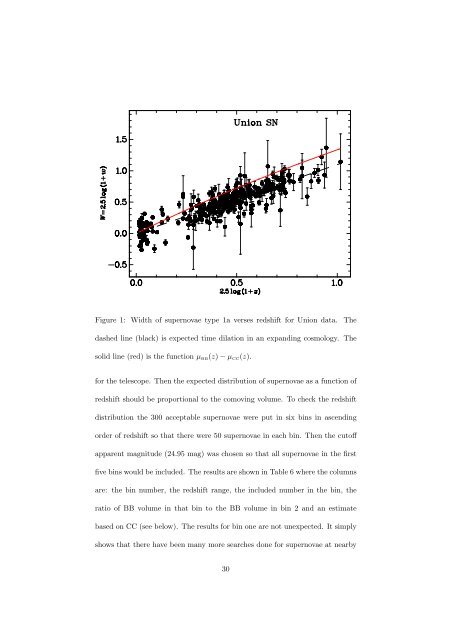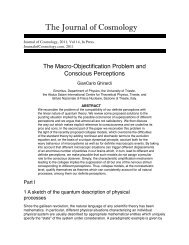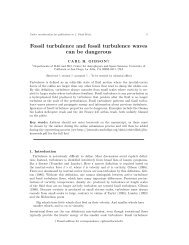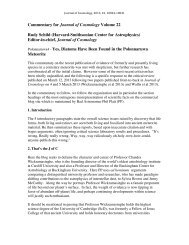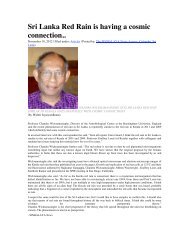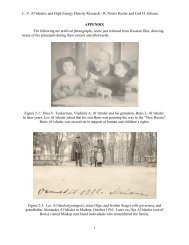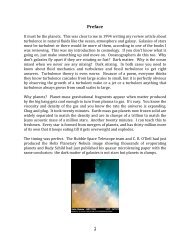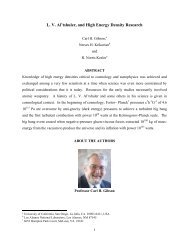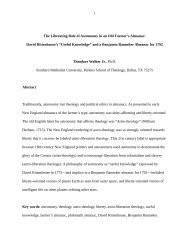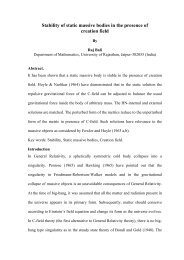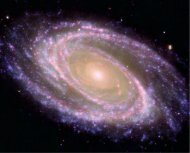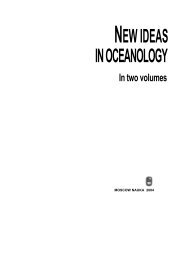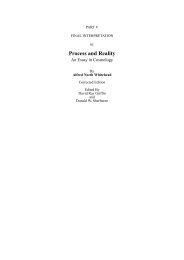Observational Evidence Favors a Static Universe - Journal of ...
Observational Evidence Favors a Static Universe - Journal of ...
Observational Evidence Favors a Static Universe - Journal of ...
You also want an ePaper? Increase the reach of your titles
YUMPU automatically turns print PDFs into web optimized ePapers that Google loves.
Figure 1: Width <strong>of</strong> supernovae type 1a verses redshift for Union data. The<br />
dashed line (black) is expected time dilation in an expanding cosmology. The<br />
solid line (red) is the function µ BB(z) − µ CC(z).<br />
for the telescope. Then the expected distribution <strong>of</strong> supernovae as a function <strong>of</strong><br />
redshift should be proportional to the comoving volume. To check the redshift<br />
distribution the 300 acceptable supernovae were put in six bins in ascending<br />
order <strong>of</strong> redshift so that there were 50 supernovae in each bin. Then the cut<strong>of</strong>f<br />
apparent magnitude (24.95 mag) was chosen so that all supernovae in the first<br />
five bins would be included. The results are shown in Table 6 where the columns<br />
are: the bin number, the redshift range, the included number in the bin, the<br />
ratio <strong>of</strong> BB volume in that bin to the BB volume in bin 2 and an estimate<br />
based on CC (see below). The results for bin one are not unexpected. It simply<br />
shows that there have been many more searches done for supernovae at nearby<br />
30


